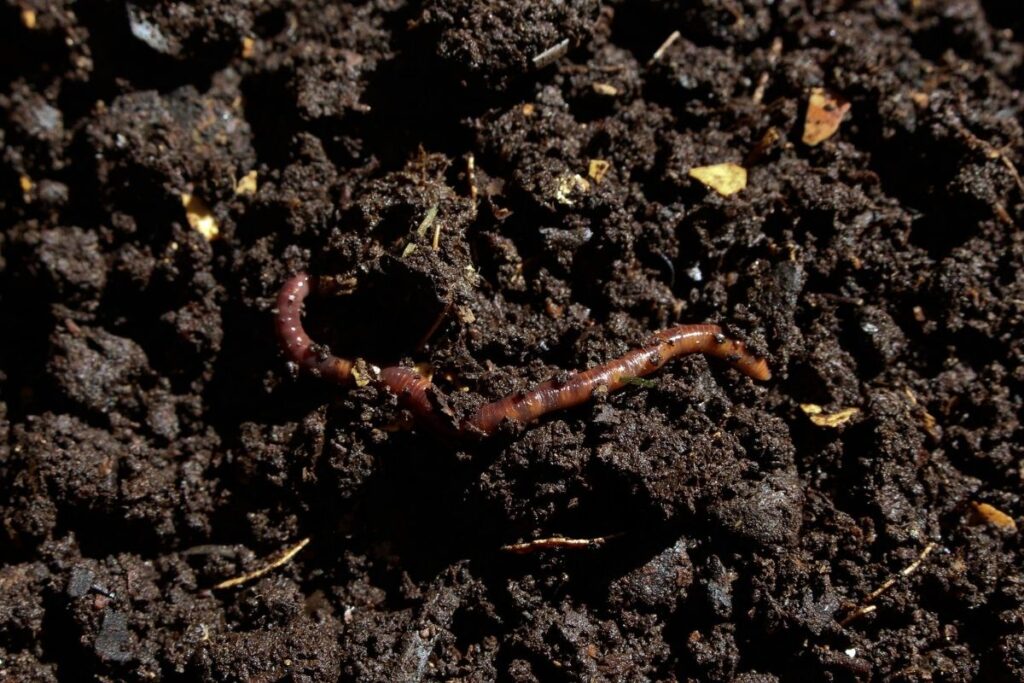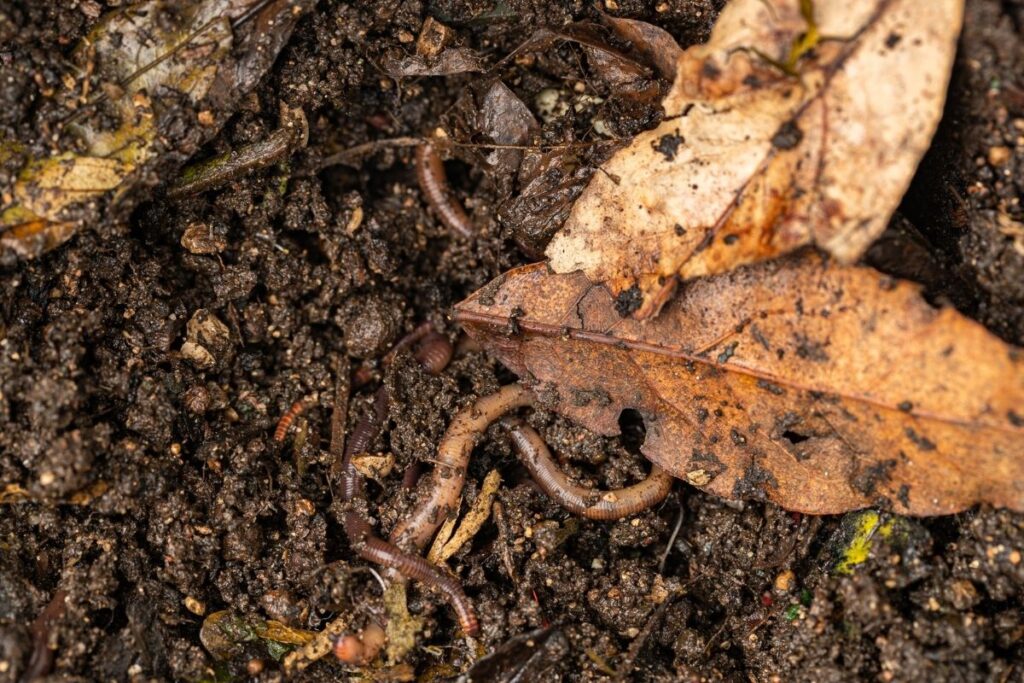Have you ever found an earthworm in your garden? Does it irk you with their slimy body? Or have you gone fishing and used them as bait to reel in the big fish? Tiny as they seem in our eyes, they are considered the giants of the soil world measuring from 10mm to 3.0m long. But have you ever wondered what role they play on the planet?
Long before people learned how to plow the ground, nature had its way of aerating the soil with the help of earthworms. These creatures create burrows which, in the process, break up the soil and allow water and air to get up to the roots of the plants, promoting plant growth.
In return, plants live stronger and more nourished. If the soil is healthy, an area of one football field is estimated to have at least 2,000,000 worms, all working together under our feet.
What exactly are earthworms?
Earthworms are found in all parts of the world where there is soil except for Antarctica because they cannot survive extremely low temperatures. They come in a diverse variety, shapes, colors, and sizes with over 7,000 recorded species around the globe. Its scientific classification is as follow:
- Kingdom: Animalia
- Phylum: Annelida
- Class: Clitellata
- Order: Opisthopora
- Suborder: Lumbricana
They are invertebrates with a lifespan of up to 8 years depending on the species. Their body is composed of segments called metamerisms which contain pores that release a certain kind of fluid. This lubricant moistens the worm enabling it to absorb oxygen through its body as they do not have a nose and lungs similar to other animals.
They also do not have ears and eyes, but they can sense light, chemicals, and mechanical vibrations due to their unique sensory organs.
Soil worms crawl using their muscular body and bristles-like structures called setae. They grab the soil and use their setae to anchor their whole body to move around.
Their way of reproducing is also amazing as they are hermaphrodite beings meaning they both contain a male and a female sex organ. However, they cannot fertilize themselves, and would still require a partner in exchange for sperm cells.
During mating, they align and rub their body against each other to produce cocoons containing eggs which will hatch after a few weeks or months. The cocoons can be found in the clitellum, an organ that is a band-like and light-colored part of the epidermis which is present among adult worms.

Important Roles of Earthworms in the Ecosystem
So, what do worms do for the soil?
Improved soil structure earthworm
Soil structure refers to how sand, silt, and clay are arranged into particles. It determines how aggregated, clodded, or clumping your soil is. Earthworms sculpt their way down to the ground which produces new aggregates and pores improving drainage, water infiltration, aeration, and overall soil tilth.
Additionally, the presence of cement soil particles can further enhance soil stability and structure, contributing to its overall health and productivity.
Enrich the soil with nutrients
Ground worms are always hungry. They feed on plant debris, including leaves, twigs, dirt, and even dead organisms.
Their digestive system consecrates this organic matter, and as a by-product, they excrete casts that are rich in nitrogen and phosphorus. These nutrient-rich casts improve soil health by providing essential nutrients.
Additionally, worm bodies decompose rapidly, contributing to the breakdown of organic and mineral constituents. Plants readily uptake these nutrients for their growth and development. Subsequently, worms also collect the organic materials down to their burrows, which further decompose and mix with the soil. Healthy worms mean healthy soil, and vice versa.
You can use this nutrient rich soil as potting soil for your potted plants.
Revitalize the soil
Soil is a non-renewable resource as it takes 500 years to make an inch of topsoil. But in the presence of earthworms, which enhances the structure and nutrient availability of the ground, the soil biology is also improved. Some mining companies have incorporated earthworms to expedite the restoration of flora and fauna of once degraded sites, helping the soil surface rebuild topsoil and transforming bad soil to living soil.
A key player in a food web
A food web is an interconnected series of food chains in an ecosystem. Earthworms are preyed upon by many species including birds, snails, turtles, moles, and many more. A threat to earthworm populations will surely affect the survival of all species above their trophic level.
How to boost the growth of earthworms in gardens?
Earthworms are also called gardeners’ best friends because of their contribution to improving the soil and in nourishing the plants. But did you know that there are ways to take care of worms and increase their number in your garden?
Regulate soil pH to >4.5
Earthworms need an abundant supply of calcium. When soil pH is lowered to 4.5, the population of earthworms starts to decline. Thus, liming the soil can increase the pH and supply the needed calcium.
Add organic matter
Food availability which refers to the organic matter present in the soil is the major restricting factor for the growth of earthworms. In a garden setup, the addition of mulch or compost regularly will provide food for the worms. Otherwise, they will starve and move to a place with more food or die.
Avoid the use of fertilizers and fungicides
The addition of fertilizers rich in nitrogen increases the acidity of the soil. The condition becomes toxic for the worms as they are deprived of calcium. On the other hand, some fungicides and other pesticides contain chemicals that are irritating and harmful to the worms.
Maintain adequate soil moisture
Some worms never come to the surface of the soil as their body will dry quickly which is detrimental for them. Worms passively absorb oxygen through their body and they need water to do it. If there is not enough moisture, they will not be able to breathe.
Improve soil drainage
The lack of moisture in the soil has the same effect as waterlogged conditions. Worms are suffocated because air cannot pass through the soil when it is too wet. Water competes with the spaces in the soil intended for air to bind and deprives the worm of oxygen, a gas important for its functioning.
Prevent soil compaction
Compacted soil has poor drainage and is low in organic matter which is not ideal for the survival of worms. It is also difficult for them to create burrows in heavy soil so make sure to avoid foot traffic in areas where you want them to thrive.
Incorporate no-tillage operations
The occasional disturbances brought by digging, plowing, and turning the soil reduces significantly the population of earthworms. The process can physically injure the worms, destroy their burrows, expose them to predators, and even reduce their food supply. Shift to the practice of no-tillage or minimal tillage which keeps your soil healthy and alive in the long run.
A tragic story
Although earthworms are a beautiful sight for gardeners, there is more about them than meets the eyes. They are considered hazardous for many temperate forests.
During the last ice age which happened 11,700 years ago, the United States and Canada were blanketed by ice. All but a few earthworm species survived in the southern areas. As a result, it was believed that many earthworms found in North America including the most common Lumbricus rubellus were introduced from Europe during expeditions of ships in the early 1600s.
As the glaciers melted, northern temperate forests started to advance in the absence of earthworms. But their flourishing ecosystem was threatened by the invasive non-native earthworms.
The once slow decaying heavy mulches on the forest floors were beneficial for the growth and reproduction of worms. This resulted in the fast decomposition of organic matter and nutrients into the soil. The burrows created by the worms also altered the drainage of the soil which speeds up the infiltration of water, nutrient leaching and drying up of the surface. The casts produced by the worms also increased the pH of the soil.
The flora and fauna which were used in having acidic soil and slow decay of organic matter were not able to survive this rapid change in the environment. The abundance of earthworms found in the forest resulted in a decline in the number of many native plants including goblin ferns, trillium, Solomon’s seal, large flower bellwort, and trout lilies.
On the other hand, Japanese barberry and buckthorn started to invade the land and replace the natives. The disappearance of heavy mulch also disrupted the habitat of many insects which lowered the population of certain salamanders and frogs dependent on it.
It is ironic how the same earthworms which are deeply loved by gardeners are the same species that make forests vulnerable to destruction.
FAQs
Why are earthworms important to the soil?
Earthworms play a crucial role in soil health and ecosystem function. They improve soil structure by burrowing through the soil, creating channels that enhance aeration, water infiltration, and drainage. Additionally, their activities contribute to a more stable soil structure, which benefits plant growth and overall soil health.
What are the best worms for soil improvement?
Red wigglers (Eisenia fetida) are often considered the best worms for soil improvement, particularly in composting systems. These worms are highly efficient at breaking down organic matter and producing nutrient-rich castings, making them ideal for vermicomposting.
Do earthworms improve soil?
Yes, earthworms improve soil in various ways. They enhance soil structure by burrowing and creating channels, which improves aeration, water penetration, and drainage.
If you’re interested in measuring the soil quality, don’t forget to use a garden moisture meter and soil tester.
See more: How to improve clay soil for lawns
*image by saad315/depositphotos







